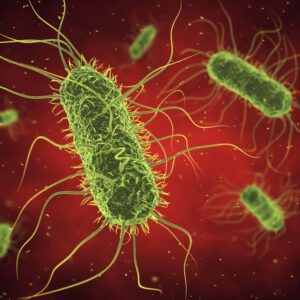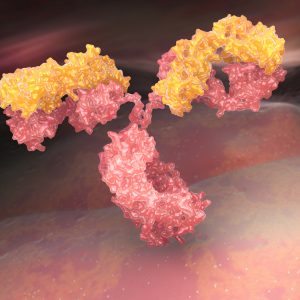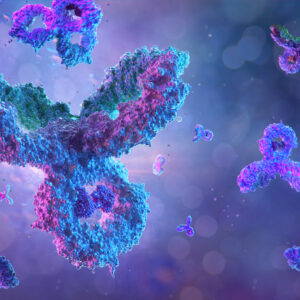GOAT ANTI-ESCHERICHIA COLI O157:H7 ANTIBODY, MOLECULAR GRADE
Goat anti-Escherichia coli O157:H7, molecular grade is an affinity purified antibody isolated from a pool of serum from goats immunized with heat-killed whole cells of E. coli serotype O157:H7. The antibody is highly specific for E. coli 0157:H7 and has been qualified for use in downstream applications requiring nucleic acid amplification.
PRODUCT DETAILS – GOAT ANTI-ESCHERICHIA COLI O157:H7 ANTIBODY, MOLECULAR GRADE
- Part of the BacTrace® range of antigens and antibodies.
- Affinity purified antibody made in goat.
- Isolated from a pool of serum from goats immunized with different strains of heat-killed whole cells of Escherichia coli O157:H7.
- This product is designed to react specifically with E. coli O157:H7 and shows minimal cross-reactivity to non-pathogenic and non-O157 strains of E.coli. No significant amplification of bacterial DNA is observed in quantitative PCR reactions. Product is tested via ELISA techniques as applicable. Cross-reactivity against other E. coli strains has been minimized through adsorption using antigens from non-O157:H7 strains of E. coli.
- Product is in lyophilized form.
- Each lot is tested to assure specificity and lot-to-lot consistency using an in-house ELISA assay.
BACKGROUND
Enterohemorrhagic Escherichia coli O157:H7 is a major foodborne pathogen causing severe disease in humans worldwide. It is a serotype of the bacterial species E. coli and is one of the Shiga-like toxin–producing types of E. coli. The infection is nationally reportable disease in the US, Great Britain, and Germany, and most US states, and Australia. Transmission is via the fecal–oral route, and most illness has been through distribution of contaminated raw leaf green vegetables, undercooked meat and raw milk. Infection with this type of pathogenic bacteria may lead to hemorrhagic diarrhea, and to kidney failure; these have been reported to cause the deaths of children younger than five years of age, of elderly patients, and of patients whose immune systems are otherwise compromised.
Three major virulence factors of E. coli O157:H7 have been identified including Shiga toxins, products of the pathogenicity island called the locus of enterocyte effacement, and products of the F-like plasmid pO157. All clinical isolates of E. coli O157:H7 possess the plasmid pO157 (Lim et al., 2010). The periplasmic catalase is encoded on pO157 and may enhance the virulence of the bacterium by providing additional oxidative protection when infecting the host. E. coli O157:H7 non-hemorrhagic strains are converted to hemorrhagic strains by lysogenic conversion after bacteriophage infection of non-hemorrhagic cells.
REFERENCES
- Lim JY, Yoon J, Hovde CJ. A brief overview of Escherichia coli O157:H7 and its plasmid O157. J Microbiol Biotechnol. 2010 Jan;20(1):5-14.



